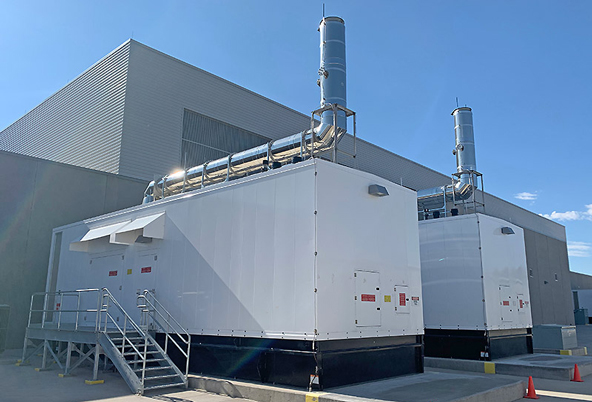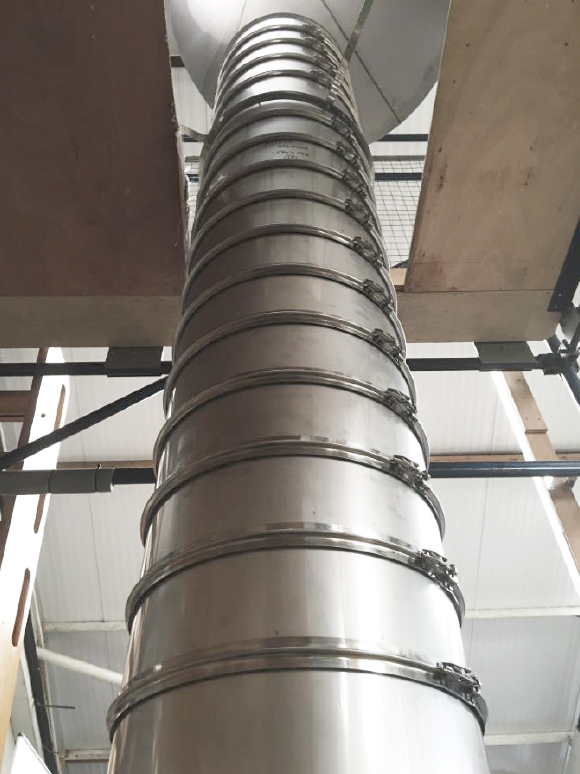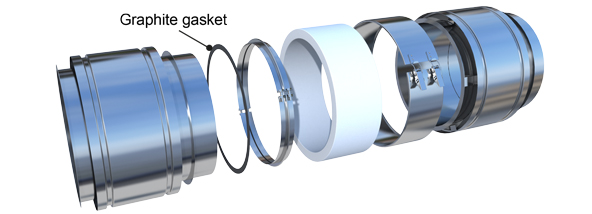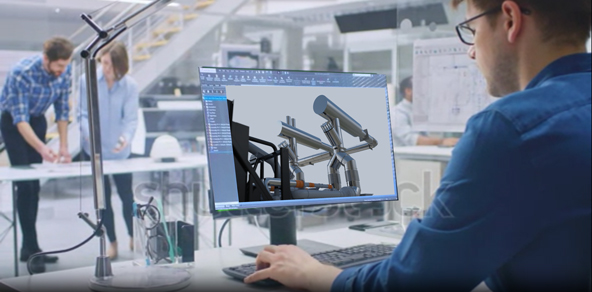
Data centers are the heart of our digital infrastructure that keeps our online world running smoothly. Constructing data centers requires meticulous planning, significant resources, and precise execution. The construction industry has recently turned to prefabrication, a game-changer in streamlining the process, enhancing efficiency, and ensuring quality in data center construction.
The data center growth has significantly increased the demand for gas-fired and diesel-fueled generators for backup power. Implementing these systems in data centers introduces challenges, such as the need for complex venting systems to exhaust safely.
Traditionally, generator exhaust systems were built using Schedule 40 carbon steel pipes. The construction involves lengthy on-site processes, including welding heavy steel pipes, insulating, erecting steel structures, and installing equipment.
Prefabrication, or off-site construction, involves manufacturing components in a controlled environment away from the site. The components are then transported to the site and assembled, reducing on-site construction time and minimizing disruptions. While prefabrication has been used in various industries for decades, its application in data center construction has gained significant traction. A key benefit of prefabricated generator exhaust systems in data center construction is SPEED.
Prefabrication allows simultaneous off-site manufacturing and on-site preparation, significantly reducing construction timelines – it’s virtually an End-to-End solution:

Prefabricated generator exhaust offers greater precision and quality control than traditional construction methods. Components manufactured in a controlled environment using advanced technology and automation systems ensure consistency in dimensions, structural integrity, and adherence to design specifications. A UL listed, pre-engineered chimney system produced in a factory meets code requirements and does not require field testing.
Factory-built exhaust systems ensure consistent quality and improved cost efficiency compared to field-fabricated methods. A key advantage of factory fabrication is the pre-insulated, double-wall construction ensuring a lightweight yet durable system. The precise engineering accommodates thermal expansion and vibration isolation by including pre-engineered supports, expansion bellows, and guides, simplifying the installation process.
Some of the advantages of prefabrication are consistency, uniformity – and safety.
Building chimney systems in a factory enables integration of safety features. One example is the sealing of chimney joints.

Most chimneys use a flange-to-flange joint system secured with a V-band and sealed with high-temperature cement. The sealing is performed by the installer during installation. Operating the generator will expand the flange followed by contraction when the generator is off. The heating and cooling will stress the V-Channel – and the high temperature cement used as sealant. Over a short period of time the cement will start to show hairline cracks, and the chimney will start to leak. Periodic maintenance testing will prove this.

ENERVEX uses a flange-to-flange system too. But the V-band is replaced by a U-band that allows the flanges to expand and contract freely. Between the flanges an integrated graphite gasket provides the seal.

From UL testing it has been confirmed that at 1400°F the leakage rate of a system using cement sealant is 7 times higher than one using a graphite gasket!
Prefabrication enables data center developers to leverage economies of scale and optimize resource utilization. Developers can save costs by standardizing building components and leveraging bulk purchasing power without compromising quality. Furthermore, off-site manufacturing reduces material waste, as components can be precisely engineered to minimize excess materials. This benefits bottom-line profits and helps achieve sustainability targets in modern construction.
Prefabrication enhances safety on construction sites, a critical concern in data center construction. By minimizing on-site activities and reducing exposure to potential hazards, prefabrication helps create a safer working environment for construction workers. Additionally, controlled conditions of off-site manufacturing contribute to better ergonomics and fewer workplace injuries.
One of the most significant advantages of prefabrication in data center construction is the potential for improved energy efficiency and sustainability. Prefabrication supports circular economy principles by facilitating the reuse, repurposing, or recycling of chimney components. At the end of a data center’s lifecycle, modular chimney components can be disassembled and repurposed for other projects, minimizing waste and maximizing resource efficiency.
This cradle-to-cradle approach aligns with the growing emphasis on sustainability and responsible resource management in the construction industry.
Despite its numerous benefits, prefabrication in data center construction presents challenges. Designing and manufacturing complex building components require advanced engineering expertise and specialized facilities. Coordination between multiple stakeholders, including architects, engineers, contractors, and manufacturers, ensures seamless integration of prefabricated chimney modules into the overall construction process.

However, the benefits of prefabrication far outweigh these challenges, making it a profitable option for data center construction projects. As the demand for data continues to grow exponentially, the need for efficient, scalable, and sustainable data center infrastructure will only increase. Prefabrication addresses these needs while enhancing speed, quality, safety, and environmental performance.